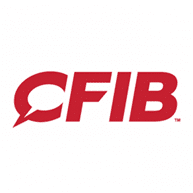Use our free Restaurant Profit Margin Calculator to estimate gross margin, prime cost, net profit, and break-even. Pick a preset, enter sales and costs, and see instant results tailored for Canadian restaurants.
Restaurant Profit Margin Calculator
Restaurant Profit Margin Calculator (Canada)
Estimate gross margin, prime cost, net profit, and break-even sales for your restaurant. Choose a preset, enter sales and costs, and see instant results plus a visual cost breakdown.
Boost your restaurant’s cash flow
Compare business financing options from trusted Canadian lenders in minutes.
Free Restaurant Profit Margin Calculator
Presets
Tap a preset to pre-fill sales and cost benchmarks for that concept. You can edit any field below.
Your monthly sales & cost inputs
Total menu revenue before HST/GST. Include dine-in, takeout, delivery.
Ingredients, disposables. Target varies by concept/menu mix.
Front & back of house wages + benefits & payroll burden.
Base rent plus common-area/NNN charges.
Electricity, gas, water, internet/phone.
Ads, social, promo; include third-party delivery commissions if applicable.
Insurance, cleaning, repairs, smallwares, POS, linen, etc.
Accounting, office supplies, bank fees, software.
For after-tax profit view; sales taxes are excluded from sales above.
Menu & traffic (optional for checks)
Average spend per guest before tax & tip.
Average number of guests served daily.
Used to sanity-check sales vs. average check × guests.
Key Results
Cost Breakdown (Monthly)
Legend — ■ COGS • ■ Labour • ■ Fixed Opex • ■ Net
What-If: Quick Optimizations
Try a change and see impact
Applies to sales only (costs unchanged aside from % of sales items).
Reduce waste, renegotiate vendors, portion control.
Schedule optimization, cross-training, prep batching.
Monthly Summary Table
Show itemized profit & loss
| Metric | Amount | % of Sales |
|---|
Need funds to improve margins
Upgrade equipment, renovate, or boost marketing with the right financing.
Restaurant Margin Basics in Canada
Prime cost is king
Prime cost (COGS + labour) is the largest controllable expense. Many healthy restaurants target prime cost under 60–65% of sales depending on concept, location, and menu mix. If rent is high, push prime lower.
Benchmarks vary by concept
- Quick service: COGS 28–32%, labour 22–28%
- Café/bakery: COGS 25–30%, labour 25–30%
- Casual dining: COGS 30–34%, labour 26–32%
- Fine dining: COGS 32–38%, labour 30–36%
- Bar-forward: lower COGS on beverage, higher labour late nights
Levers to improve profit
- Engineer menu: highlight high contribution items, trim low-margin SKUs
- Negotiate vendors, buy seasonal, reduce waste & over-portioning
- Optimize labour by daypart, cross-train, prep efficiency
- Boost average check with add-ons and bundles
- Review delivery mix & commission impact; incentivize direct orders
This tool is educational. Actual margins depend on your operations, pricing, and market.
How to Use the Restaurant Profit Calculator
- Pick a preset that matches your concept.
- Enter sales & costs (use chips for speed). Add rent, utilities, marketing and other opex.
- Optionally add check & guests to cross-check sales versus traffic.
- Review results (prime cost, net margin, break-even) and the cost breakdown chart.
- Test improvements via the What-If chips to see instant impact.
Restaurant Profit FAQs
How is restaurant gross margin calculated
Gross margin = Sales − COGS (as a % of sales). It excludes labour and operating expenses.
What is prime cost and why does it matter
Prime cost = COGS + Labour. It’s the biggest controllable cost; keeping it within target ranges leaves room to cover fixed expenses and profit.
How do I calculate break-even sales
Break-even = Fixed costs ÷ (1 − Variable cost %). Here, variable costs include COGS%, labour% and admin% of sales; fixed costs include rent, utilities, marketing and other fixed opex entered as dollars.
What’s a good net profit margin for restaurants
Many operators target 8–15% in healthy conditions, but results vary widely by concept, location, debt service, and owner compensation.
Do delivery fees go in COGS or operating expenses
Marketplace commissions are typically operating expenses (marketing/delivery), not COGS. If your contracts rebill product cost net, adjust accordingly.
How often should I update my menu prices
Review quarterly or when input costs change materially. Use contribution margin analysis, not just a flat markup, to protect profit.







